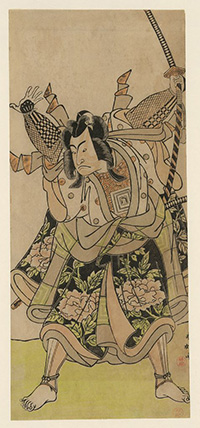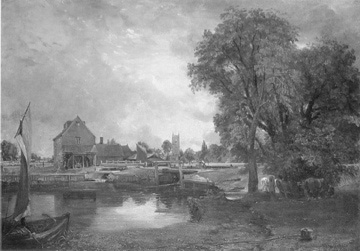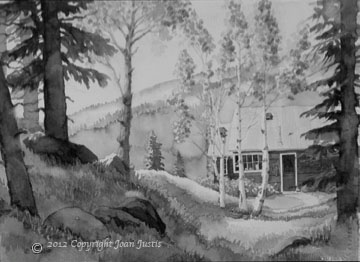Artistic Lines
from Joan Justis
January 2014
http://joanjustis.com
 Notan is a term using two Japanese words meaning dark, light. Arthur Wesley Dow (1857-1922) became acquainted with a collector of Japanese art. Professor Ernest F. Fenelossa was the imperial art commissioner for the Japanese government. Dow was fascinated with the beauty of Ukiyo-ye woodcut prints in the collection. He determined that their flat “dark, light” shapes or notan was “an element of natural beauty”, and became interested in the massing of dark and light shapes, their balance, and counterplay or rhythm in visual art.
Notan is a term using two Japanese words meaning dark, light. Arthur Wesley Dow (1857-1922) became acquainted with a collector of Japanese art. Professor Ernest F. Fenelossa was the imperial art commissioner for the Japanese government. Dow was fascinated with the beauty of Ukiyo-ye woodcut prints in the collection. He determined that their flat “dark, light” shapes or notan was “an element of natural beauty”, and became interested in the massing of dark and light shapes, their balance, and counterplay or rhythm in visual art.
As an art professor at Columbia University, the Pratt Institute and the Art Students League of New York, Dow developed compositional exercises (published 1899). In these exercises the student is to “choose a number of masterpieces, ancient and modern, and blot in the darks in broad flat tones noting the spacing and notan”. At first the lessons use only black and white. This is John Constable’s Dedham Lock and Mill 1820.  Then they evolve into using three and more values of gray. We sometimes refer to the dark, light of notan as negative and positive space.
Then they evolve into using three and more values of gray. We sometimes refer to the dark, light of notan as negative and positive space.
I decided to take some of my pieces http://joanjustis.com and use black and white images of them in order to look for balance and rhythm of the spacing of my value masses.
When we look at a piece of art, we first focus on the positive shapes. To see the other shapes in the piece, we have to refocus our brains on the background shapes or design pieces that are around the evident objects in paintings, drawings, and sculpture. Then we can study the dark and light masses, looking for balance and harmony. (It helps to ask, “Does anything feel disturbing or out of place?”)


“Composition, A Series of Exercises in Art Structure for the Use of Students and Teachers” by Arthur Wesley Dow is available free as a Google E-book at http://play.google.com. This book also provides instruction and exercises in the use of line and color with notan. Enjoy the harmony and study the notan of his work at Arthur Wesley Dow images Be sure to scroll through them. They are not in the public domain.


